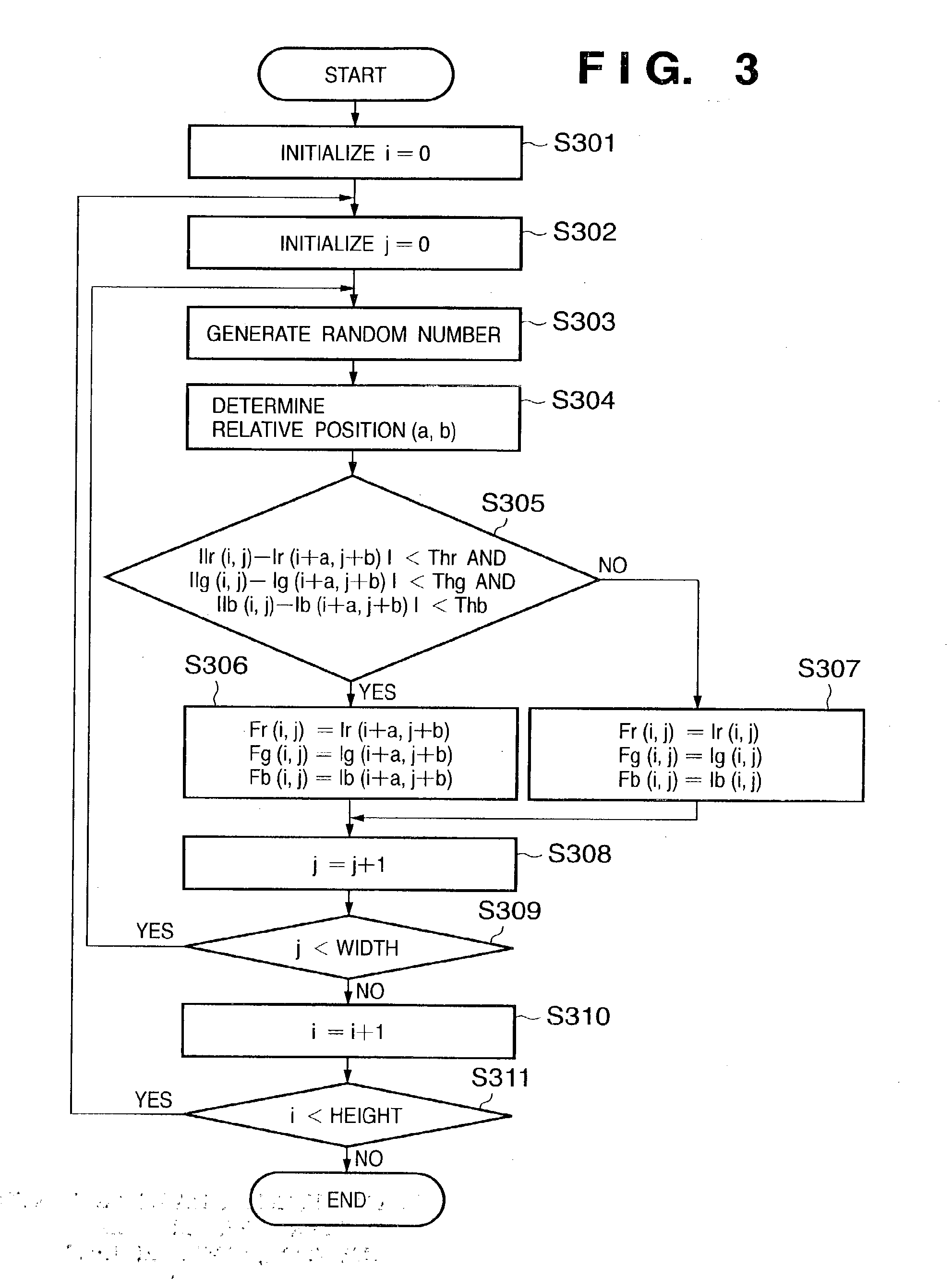Image processing apparatus, image processing method, and computer program
a technology of image data and processing apparatus, applied in the field of image processing apparatus and image processing method, and a computer program, can solve the problems of increasing the noise level, especially impairing the image quality, and the sensitivity of a ccd or cmos sensor, and achieve the effect of removing the low-frequency noise contained in image data
- Summary
- Abstract
- Description
- Claims
- Application Information
AI Technical Summary
Benefits of technology
Problems solved by technology
Method used
Image
Examples
first embodiment
[0070]An image processing apparatus which comprises a low-frequency noise removal function according to the first embodiment of the present invention, and generates print information to be output to a printer engine will be described below with reference to the accompanying drawings.
[0071]Note that the low-frequency noise removal function according to the present invention can be applied to various forms as a function in an image input device such as a digital camera, image scanner, or the like, that in an image output device such as an ink-jet printer, sublimatic printer, laser printer, or the like, or that in a device driver or application software on a computer required to control these input / output devices.
[0072]FIG. 1 is a block diagram showing the arrangement of an image processing apparatus which is implemented by applying a low-frequency noise function according to the present invention to a printer driver that generates print information to be output to a printer engine on ...
second embodiment
[0110]FIG. 11 is a flow chart for explaining the operation sequence of a noise removal module according to the second embodiment of the present invention. Note that the arrangements of the image processing apparatus and noise removal module according to the second embodiment are the same as those in the block diagrams shown in FIGS. 1 and 2. In the second embodiment, a color space on which the noise removal module 101 executes noise removal is a YCrCb color space as a luminance-color difference space in place of the RGB color space.
[0111]Note that conversion from R, G, and B into Y, Cr, Cb is not the gist of the present invention, and a description thereof will be omitted. Therefore, the RGB space may be converted into the YCrCb space before input to the noise removal module 101, or YUV signals as luminance and color difference signals decoded by the JPEG algorithm may be used intact.
[0112]As shown in FIG. 11, the noise removal module 101 resets variable i indicating a vertical proc...
third embodiment
[0140]FIG. 14 is a flow chart for explaining the operation sequence of a noise removal module according to the third embodiment of the present invention. Note that FIG. 14 shows another example of the operation sequence of the noise removal module 101 shown in FIG. 2.
[0141]As shown in FIG. 14, the noise removal module is initialized to reset variable i indicating a vertical processing address to zero (step S1401). Likewise, variable j indicating a horizontal processing address is reset to zero (step S1402). Also, a loop count is initialized to reset variable loop indicating a selectable loop count per pixel of interest (step S1403).
[0142]The random number generator 205 generates a random number (step S1404). The pixel selector 204 determines the values of horizontal and vertical relative positions a and b from the pixel of interest on the basis of the generated random number (step S1405). Using the determine values a and b, comparison is made (step S1406) to see whether or not:
|Ir(i...
PUM
 Login to View More
Login to View More Abstract
Description
Claims
Application Information
 Login to View More
Login to View More - R&D
- Intellectual Property
- Life Sciences
- Materials
- Tech Scout
- Unparalleled Data Quality
- Higher Quality Content
- 60% Fewer Hallucinations
Browse by: Latest US Patents, China's latest patents, Technical Efficacy Thesaurus, Application Domain, Technology Topic, Popular Technical Reports.
© 2025 PatSnap. All rights reserved.Legal|Privacy policy|Modern Slavery Act Transparency Statement|Sitemap|About US| Contact US: help@patsnap.com



